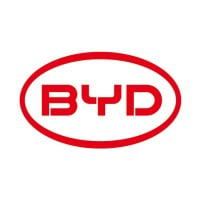
BYD
Established in 1995, BYD is a top high-tech enterprise in China specializing in IT, automobile, and new energy.BYD is the largest supplier of rechargeable batteries in the globe, and has the largest market share for Nickel-cadmium batteries, handset Li-ion batteries, cell-phone chargers and keypads worldwide. It also has the second largest market share for cell-phone shells in the globe. BYD Auto becomes the most innovative independent national auto brand and leads the field of electric vehicles with unique technologies. In the field of new energy, BYD has developed green products such as solar farm, battery energy storage station, electric vehicle, and LED, etc. It will continue to lead the new energy revolution in the world!






